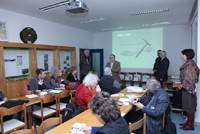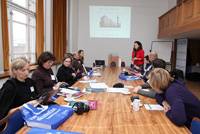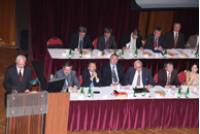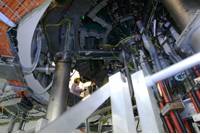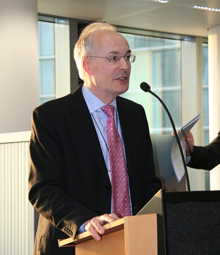
1. As Director of the Research Executive Agency, could you please outline for what purpose the Research Executive Agency was set up and what its mission is?
2. What are the differences in comparison with other EC agencies?
Regulatory Agencies take many forms and are created by the Council and/or the European Parliament. They can be located anywhere in the EU, often have a policy role and a governance structure that can involve the Member States and the European Parliament as well as the Commission. Executive Agencies, on the other hand, have a prescribed legal form, are located either in Brussels or Luxembourg, have no policy role and are set up and supervised by the European Commission. They are linked to the execution of specific programmes, so have a lifespan limited to the life of those programmes. The task of executive agencies is to execute specific activities which would normally have been carried out by the European Commission. As they concentrate on this management role, and have no policy remit, executive agencies can be more effective and more efficient in addressing their clients' needs, i.e. the needs of the research communities in the case of the REA. The REA has its own legal personality, but is supervised and controlled by the European Commission, in particular by the directorates general that have research portfolios: DG RTD, DG ENTR, DG INFSO and DG TREN. The REA will be the biggest of all executive agencies. It has a planned staffing of 558 in 2013.
The Agency is responsible for the full implementation of the project cycle for the Marie-Curie actions of the People Programme; the SME-specific activities of the Capacities Programme and a large part of the Space and Security themes from the Cooperation Programme of the FP7. For each of these areas, the agency issues calls for proposals, evaluates the proposals and then negotiates grant agreements with successful applicants. It then administers the grant agreements, checking on the project deliverables and paying the EU contribution to the project partners. A separate part of the agency - the FP7 support unit - is in charge of managing the centralised FP7 support activities for most parts of the Framework programme. This includes running the FP7 evaluation building, receiving proposals and handling the logistics of proposal evaluation, including evaluator contracting and payment, providing a central participant validation service and financial viability checks, as well as running the centralised FP7 enquiry service.
Overall, the REA will manage a budget of around €1bn each year, rising to some €1.6bn per year in 2013. It will manage about half of all FP7 contracts and provide support and evaluation facilities for almost all FP7 programmes (except for the IDEAS and Euratom programmes). It will deal with high volume, but small size grants for the Marie Curie and SME actions and low volume, but large size grants for the Space and Security themes. With FP7’s budget set to increase significantly from 2010 and rise to double the 2007 figure by 2013, the agency is also essential for logistical reasons, as it would not have been possible for the Commission to manage twice the volume of work with the same number of staff.
The overall governance structure for the REA is in line with the typical executive agency structure established for previous agencies. Each of the parent DGs (RTD and ENTR) put in place structures to ensure coordination between the agency (which only executes policy) and the teams responsible for formulating the research policy. The organisation of the REA consists of four principal blocks (see the organisation chart also at http://ec.europa.eu/research/rea/pdf/organigramme_web.pdf): central management; 7 operational units; finance and administration; and the FP7 support services. The REA's home is a new office building and evaluation facility situated in the 'Covent Garden' complex at Place Rogier in Brussels, close to the Gare du Nord, and within easy reach of the city centre and the Commission buildings. A total of 232 staff is in place now and this will grow to 349 by December 2009.
Apart from the preparation and adoption of the legal acts setting up the agency, most of the launch activities for the Agency took place in 2008 and early 2009. In particular, several large recruitment campaigns have been run, IT, building and other infrastructure has been put in place and the internal procedures and financial circuits of the REA have been established, staff have been recruited and have undergone the necessary training and the agency's work programme is being finalised. We are now heading towards operational and administrative autonomy in mid-June 2009 and are starting our operational activities. Although the REA is set up for a limited period of time, i.e. for the lifetime of FP7 with a phasing out period until 2017, its lifetime might well be extended. If the model works well, the REA's mandate could be extended to cover further EU research programme management. Whether or not to extend the lifetime and mandate to cover other areas of the eighth Framework Programme (FP8) is however a decision for the next EU Research Commissioner.
5 Jun 2009


 Česky
Česky





